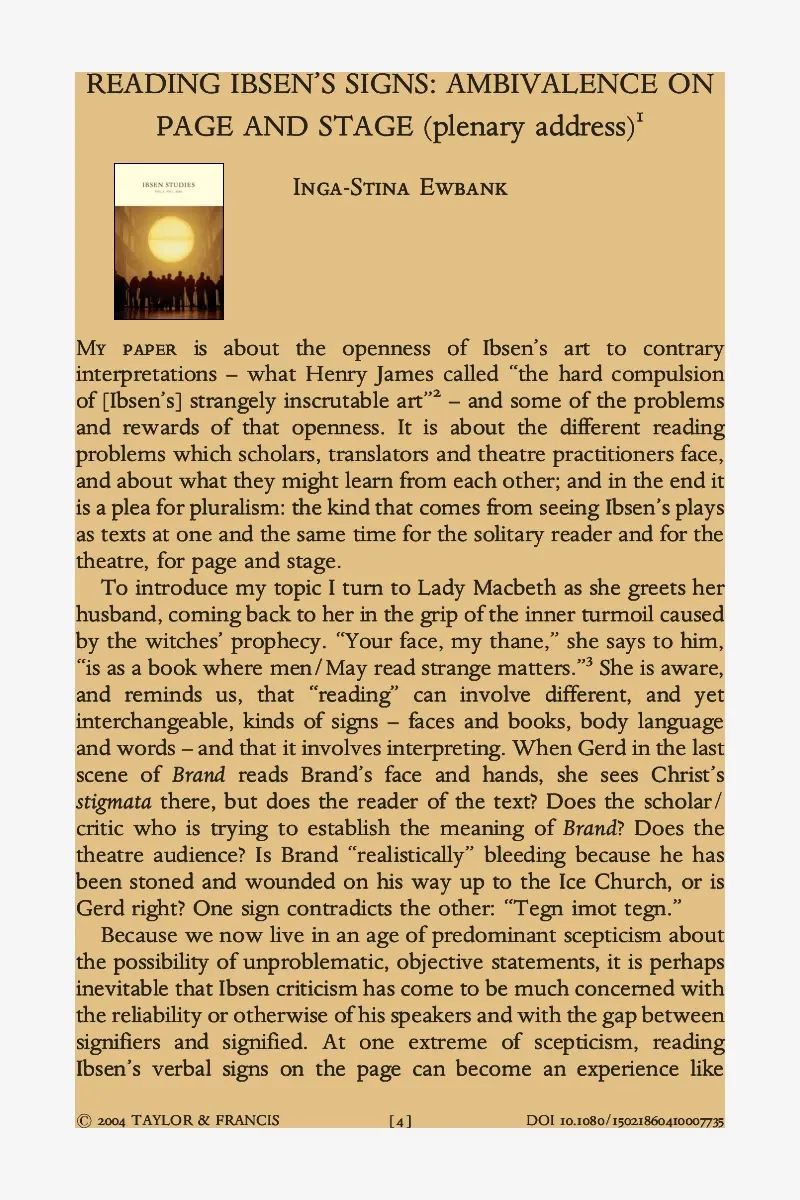Reading Ibsen’s Signs: Ambivalence on page and Stage
by Inga-Stina Ewbank
An extract from the Plenary Address at the 10th International Ibsen Conference, Long Island University, Brooklyn, New York, June 1-7, 2003

© Image courtesy of WikiMedia Commons
“It may be that in 2003 Ibsen’s intentions in Little Eyolf can be more faithfully re-created in the theatre by non-naturalistic staging. This was forcibly brought home to me earlier this year by the Dale Kompani’s production of the play at a small London fringe theatre (The Rosemary Branch, where the Dale Kompani had a six weeks season, March-April 2003). Ibsen’s text was all there, in a faithful translation into English by Terje Tveit, who had also directed; but the set was bare but for a few permanent props: a suitcase out of which spilled the blank leaves of Alfred Allmers’ unwritten book on Human Responsibility; a bench on which characters confronted each other; a flagpole round which they moved, their body language suggesting at times the same despair as those sentences which have nowhere to go but a dash, at other times a glimmer of purpose and hope. The actor who played Little Eyolf was an adult, and so attracted none of the extra-textual sympathy usually given to the child actor as such. Taller than any other member of the cast, six foot and more, he spoke the child’s lines through the crutch he held up. Less important in his own right than as an object of displacement and guilt, he stayed on stage (as did the Rat Wife) throughout the three Acts, a personified conscience. And the ending left us powerfully torn between believing and not believing that Rita and Allmers had a future other than emptiness and death. Here was a creative translation which had started from a faithful reading of Ibsen’s signs and had gone on to ask how these signs could be made to speak to a contemporary audience. And by ‘speak to’ here I don’t mean suspend disbelief, but move, alert, harrow, disturb. That is, activate what James called ‘the hard compulsion’ of Ibsen’s art.”
